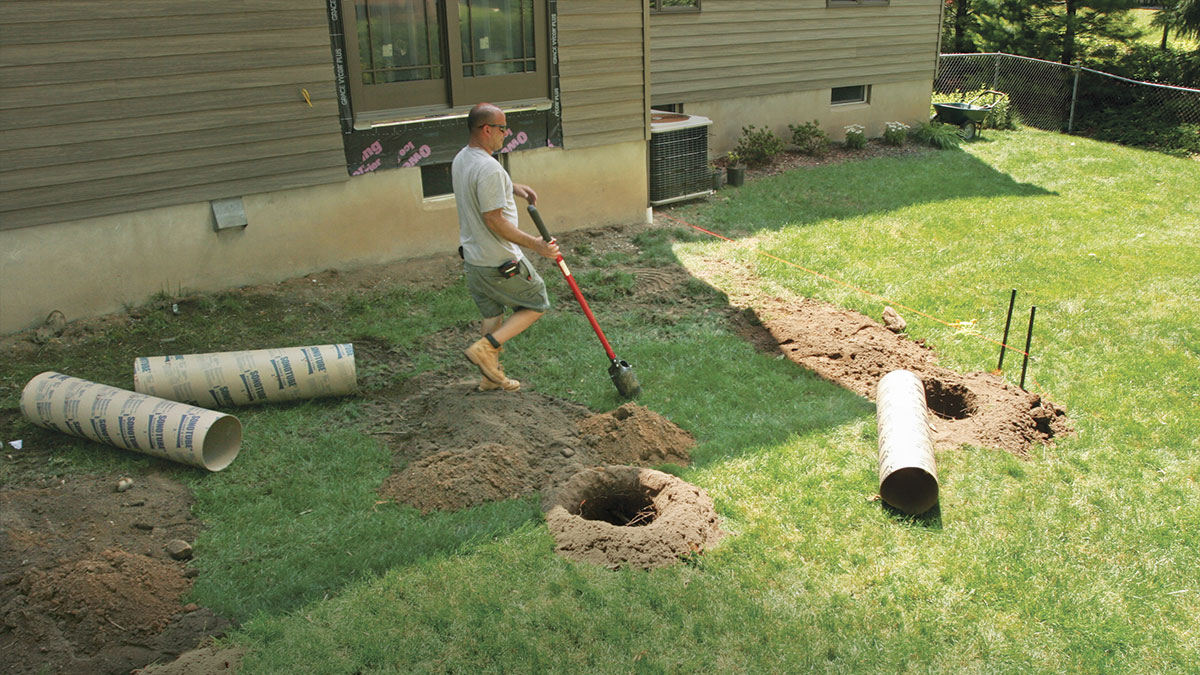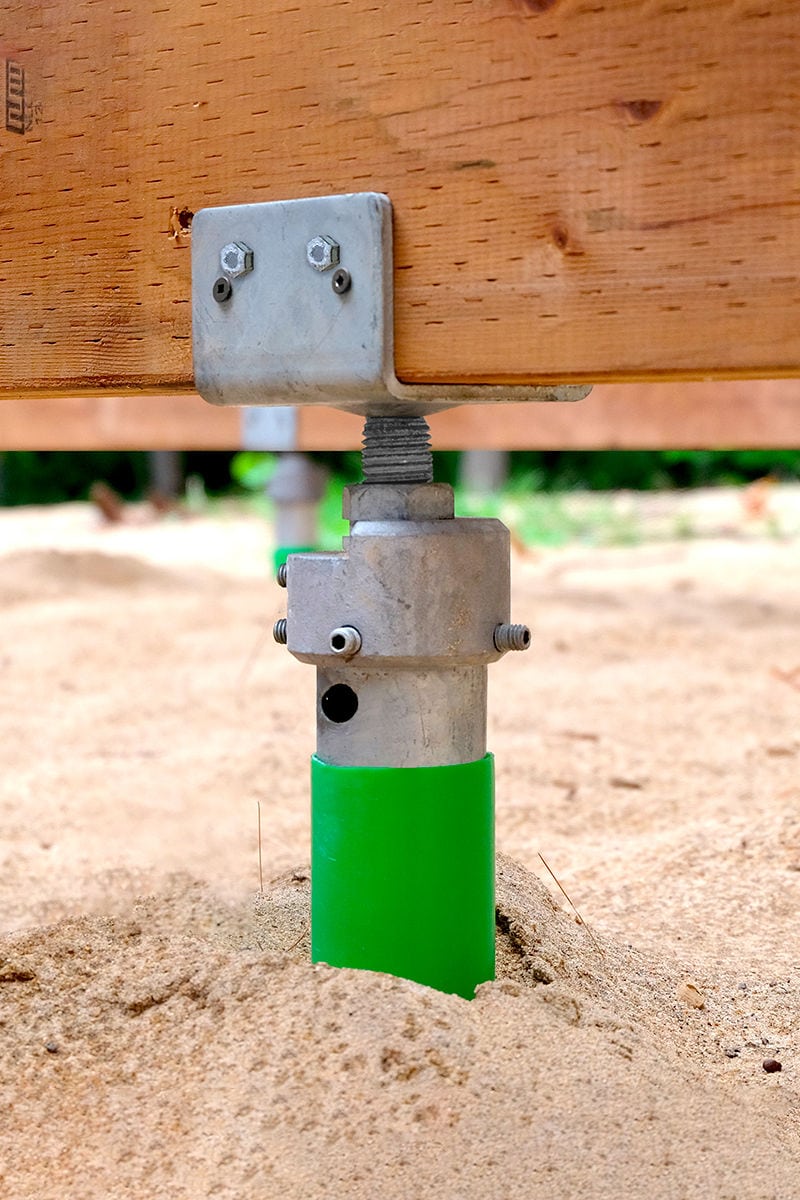Choosing the Right Deck Footings for Stability and Toughness
The longevity and safety and security of your deck depend greatly on the type of footings you pick, as they offer the essential assistance and security to stand up to the test of time. In this discussion, we will certainly check out the various types of deck grounds, think about the vital aspects to evaluate when making a choice, and delve right into the pros and disadvantages of various options.
Kinds Of Deck Footings
These grounds are composed of a round hole loaded with concrete, which supplies a solid structure for the deck posts. Concrete pier grounds are fairly very easy to mount and use superb stability, making them a popular selection for several deck projects.
An additional sort of footing is the helical pile footing. Helical piles are steel shafts with helical plates affixed to them. These footings are set up by screwing them right into the ground, which develops a safe foundation for the deck. Helical pile grounds are ideal for locations with difficult dirt problems, as they can be installed in nearly any type of type of dirt. They also permit easy adjustment and progressing of the deck if required.
Alternatively, some builders choose precast concrete grounds. These footings are made of long lasting concrete and be available in various sizes and shapes to fit various deck layouts. Precast concrete footings are convenient to install and offer a steady base for the deck framework.
Lastly, an additional alternative is the post-in-anchor ground system. This type of ground includes driving a metal support right into the ground and attaching it to the deck post. It uses versatility in terms of placing the deck articles and is suitable for decks with light-weight frameworks.
When picking the right kind of deck footing, it is vital to take into consideration variables such as dirt conditions, deck load, and regional building regulations (Deck Footings). Consulting with a specialist specialist or structural designer can assist guarantee the proper ground is picked for a steady and risk-free deck
Factors to Think About When Selecting Footings
When picking the suitable grounds for a deck, it is critical to thoroughly take into consideration different elements such as dirt conditions, deck load, and adherence to local building codes. These aspects play a significant function in guaranteeing the stability and toughness of the deck framework.
The kind of soil on which the deck will certainly be built determines the type of grounds required. On the various other hand, decks built on clay or expansive dirts may call for grounds that can accommodate the dirt's propensity to expand and agreement.
One more essential aspect is the deck load. The weight of the deck, consisting of the products made use of and any type of possible real-time tons such as furniture or events, have to be thought about when selecting grounds. The footings should be made to birth the weight of the deck and disperse it uniformly to avoid any kind of architectural issues or failures.
Last but not least, adherence to regional building regulations is paramount. Structure codes differ from area to region, and it is necessary to adhere to the details needs set by the neighborhood authorities. Deck Footings. These codes make sure that the deck is built safely and satisfies the essential standards for structural integrity and load-bearing ability
Concrete Footings: Benefits And Drawbacks

Concrete grounds use several advantages and downsides when used as the foundation for a deck. On the favorable side, concrete footings give outstanding stability and toughness. Concrete is a stiff and solid product that can sustain heavy tons and stand up to numerous weather. It additionally has a long life-span, making it a dependable choice for long-lasting usage.
One more benefit of concrete grounds is their convenience. They can be put right into different shapes and dimensions to fit various deck styles and setups. Concrete footings can be tailored to fit the specific demands and requirements of the deck structure.
Nonetheless, there are also some drawbacks to using concrete grounds. One significant drawback is the cost and labor entailed in their installment. Concrete footings need excavation and usually need the aid of hefty machinery. This can boost the overall price of the deck task and might call for specialist support.

Helical Piers Vs. Sonotubes: Which Is Better?
In thinking about the structure choices for a deck, the comparison between helical piers click here for more info and sonotubes is essential in establishing the exceptional choice. They are turned right into the ground making use of hydraulic machinery, giving a durable and secure structure for the deck.
The helical plates on the piers produce a strong hold with the soil, preventing any activity or shifting of the deck. Sonotubes, on the other hand, count exclusively on the concrete loading for stability, which may not offer the very same level of stamina and resistance.
In additional resources regards to installment, helical piers are relatively much easier and faster to set up contrasted to sonotubes. The hydraulic machinery utilized to twist the piers into the ground guarantees a fast and effective procedure. Sonotubes, on the other hand, need digging openings and putting concrete, which can be time-consuming and labor-intensive.
Additionally, helical piers are a more versatile choice. If required, they can be made use of in various dirt problems and can be adjusted or strengthened. Sonotubes, on the other hand, may need additional support, such as rebar, in certain dirt conditions or locations with high load requirements.
Choosing the Right Footings for Your Deck's Dimensions
For ideal architectural honesty, it is vital to thoroughly pick the proper footings that line up with the dimensions of your deck. The dimensions of your deck, including its length, height, and size, play a significant function in figuring out the type and size of grounds needed.
When selecting footings for your deck, it is essential to think about the load-bearing capacity of the soil. The weight of the deck, incorporated with the weight of any type of furnishings or individuals on it, exerts a significant force on the grounds (Deck Footings). As a result, it is important to choose grounds that can adequately support this weight without shifting or sinking gradually.
The shapes and size of the grounds should also be taken into consideration. Bigger decks with higher dimensions call for bigger footings to give sufficient stability and assistance. The form of the grounds, whether they are square or rounded, relies on the style click for more info and layout of the deck. Furthermore, the depth at which the grounds are set up should be figured out based on the frost line in your area to stop any heaving or shifting because of freezing temperatures.
Verdict
In verdict, selecting the right deck grounds is critical for ensuring security and durability. Elements such as the kind of footings, the deck's dimensions, and the pros and cons of various choices need to be considered.
These grounds consist of a round opening filled up with concrete, which offers a solid foundation for the deck articles. Concrete pier grounds are reasonably very easy to install and offer excellent stability, making them a prominent option for several deck projects.
Precast concrete footings are practical to set up and supply a steady base for the deck framework.
It supplies adaptability in terms of placing the deck posts and is suitable for decks with lightweight frameworks.
Concrete footings provide several benefits and negative aspects when made use of as the structure for a deck.